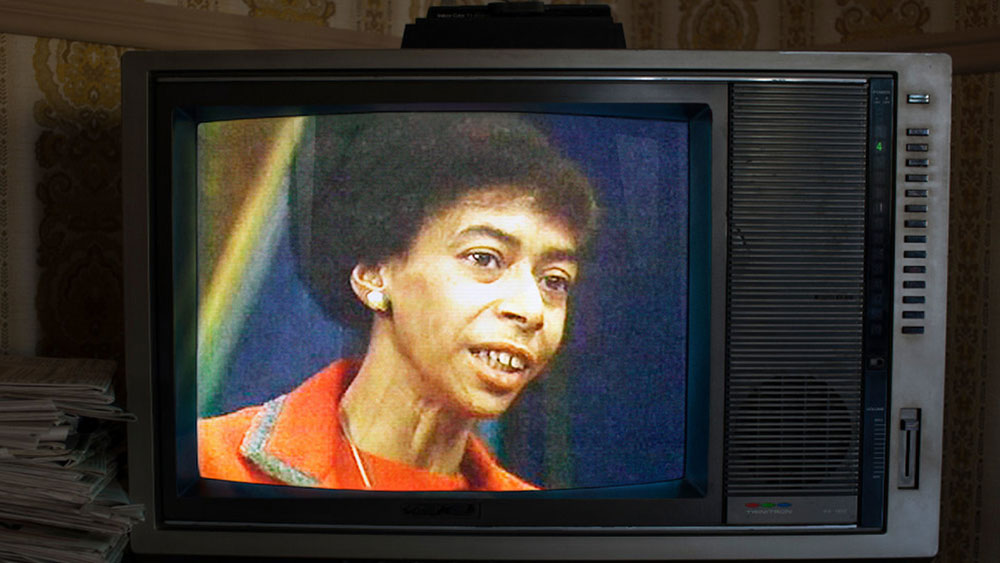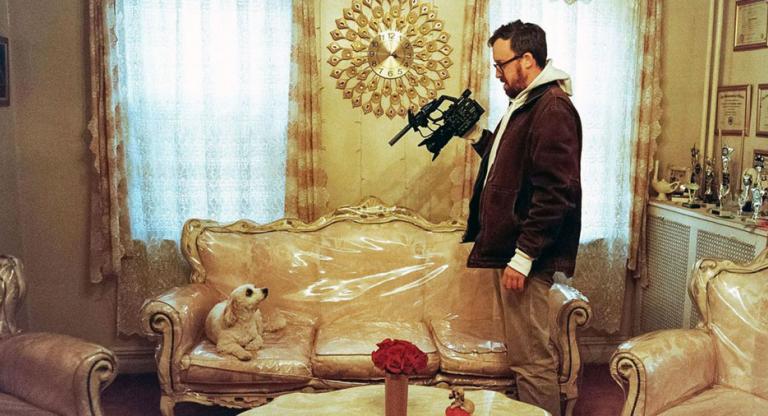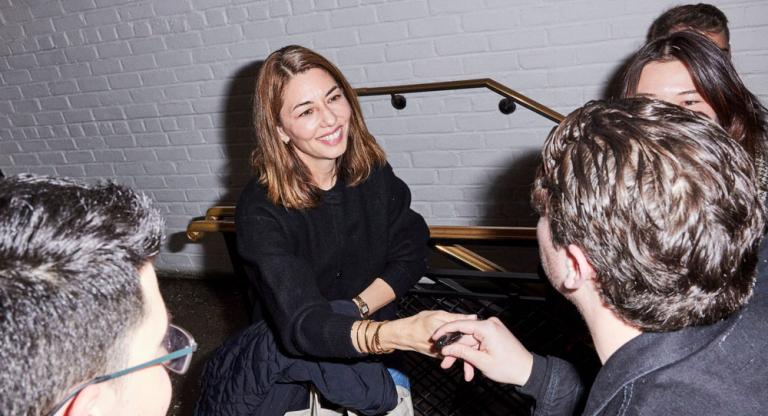Matt Wolf is a documentarian drawn as much to nonconformist personalities as he is to the physical effects they leave behind. Whether it’s avant-garde musician Arthur Russell (Wild Combination, 2008), mutable artist Joe Brainard (I Remember, 2012), or the creation of a new category of human between child and adult in Teenage (2013), Wolf’s explorations embrace the reorganization of material both artistic and ephemeral. With his recent documentary Recorder: The Marion Stokes Project (2019), archives became the story, as Wolf reckons with over 70,000 tapes of Stokes’s recorded television broadcasts. As he scrubbed through hours of footage for Recorder, Wolf started saving screenshots of images he liked. Five years later, those images form his new book, Input. On the occasion of Input’s release and Recorder’s re-screening, I spoke with Wolf about the impulse to preserve, media death, and of course, the politics of archiving.
Danielle Burgos: Both Recorder and Input are winnowed from Marion Stokes’ immense archive. Have you ever returned to material like this?
Matt Wolf: I haven't. It's interesting because that film contains so much archival stuff that I know there are things in there that I could go back and find that would be useful for other films. When I made Teenage, I got a tremendous amount of material. When you order from the National Archives, you get a whole reel from different newsreels, and there's lots of bizarre and random things that aren't what you're looking for. I made a music video out of scraps from my National Archives collection. But with [Input] it was more about, how do I take this sub-archive I created and tell a story in a way that's less narrative, that's more abstract? I didn't know what I was going to do with the images that I pulled, but I was going through so much material it made sense to create this sub-archive.
I think my impulse in terms of pulling the images was, like everything in that archive, it will be lost. It will be thrown away. This is really the detritus of popular and media culture from a certain period. There were definitely images that felt very mysterious or bizarre, and I wanted to rescue those, even though I knew they had no place in Recorder.
One of my biggest inspirations is Larry Sultan. Early on in his career he did a collaboration with Mike Mandel called Evidence [1977]. It's one of my favorite photography books ever. They took all these images they found in, I think, municipal or governmental archives that are very eerie. They feel nefarious, science fiction. They're taken totally out of context, and Mandela and Sultan made a rhythm and story to them that questions the very nature of evidence and what's left behind in photography, but in an open-ended and cinematic way, all through found material. That book was a reference point for me.
A lot of vintage media, a lot of VHS culture, can be very kitschy, making fun of the past or tapping into nostalgia. I think that's inevitable with this type of material, but I also wanted to allude to things that felt more ominous, uncannily prescient. Or that felt abstract and beautiful, so that the idea of the “trashcan of history” could feel more seductive and scary.
DB: What was the story you ultimately created?
MW: I worked with the publisher and artist Matt Connors and our designer, Ben Toosley. I made the sequence of images the same way I would start a film, where I have an idea in mind. Then the editor—or, in this case, the designer—creates a rhythm and elaborates on it, and we problem-solve together. But it was an intuitive collage that I made. I didn't have a story I was trying to tell. I was trying to create a flow of imagery.
DB: So, more Tumblr than YouTube.
MW: Yeah, and part of what I was interested in is that Tumblr, while [I was] making the book, shut down because they banned explicit material. People jumped ship and abandoned that platform, but when I was making Recorder and pulling these images, I did put them on Tumblr. That really would have been where you see mysterious, compelling imagery without context, and that has succumbed to social media, in which people curate aspects of their identity. That kind of repository of random imagery doesn't exist in the same way it did on Tumblr. So this is an artifact of that to some extent, but more permanent, in the [sense] of it being a book.
It was fun for me to work in a way where I wasn't trying to tell a story, but was operating more intuitively, making associations and creating a feeling. I'm of the mindset that Marion's archive, also the material in this book, is evergreen. It will continue to resonate because the same systems of mediated imagery and televisual culture are enduring, even as our media ecosystem and the political circumstances change.
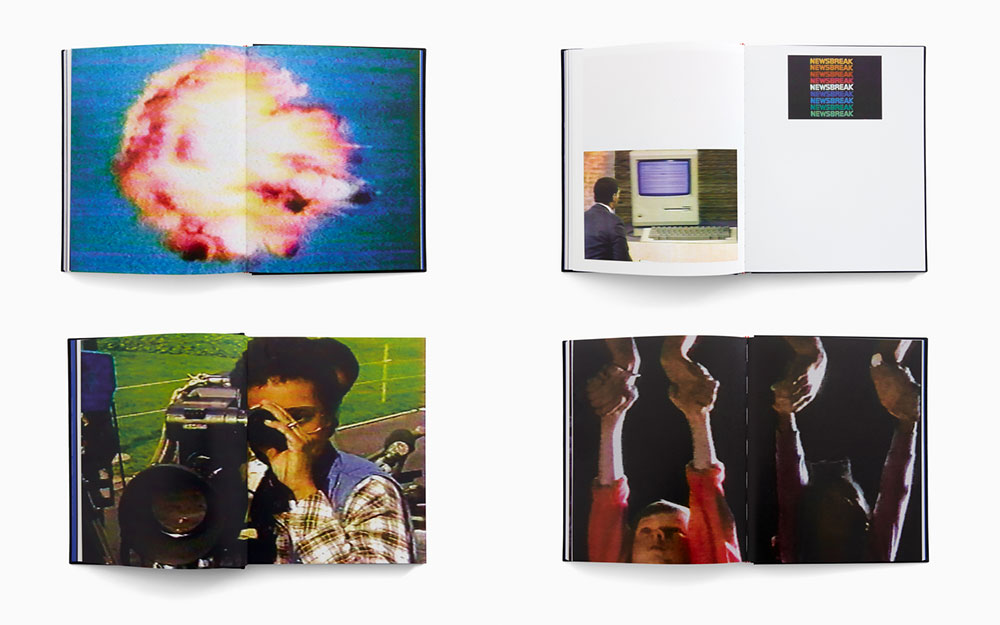
DB: Recorder features a montage of police brutality, but also a Black man in one of those clips saying “You can have the video and they still don’t care.” People have what I call their own bespoke reality to explain away anything. I wonder if taking Marion’s images out of context is similar to the Occupy protests, where they refused to specify a message because then nobody could impose one on them.
MW: That is the trouble of our sociopolitical environment now, that things are taken out of context or people choose context that supports their pre-existing views. And that media perhaps never really did provide reliable context, or information, because it always reflected the predilections of its producers. That has only become more amplified as our society becomes more fragmented and more ideologically hardened.
But that was the cornerstone of Marion's project, to try to give people a full record of the media so that they could procure solid information, or at least understand how information is distorted per the political forces that surround the production of media.
For the book, it's less about trying to provide stable information and more about the instability and chaos of media culture, and of the visual imagery that washes over us that we internalize subconsciously. I think the media really stokes quite a bit of anxiety for people. The anxiety is about the acceleration and volume of information coming at us, but it also is an intentional narrative device that's produced by the news in particular. As I went through that kind of volume of television from a certain period, it was helpful to remember that part of that flow is a steady stream of the mundane, a steady stream of the absurd. . . .
DB: We don't have that as much any more because it's all national news; regional news has almost disappeared.
MW: No, I think we have it. We just don't watch the flow of television, linear television, in the way that we had in the past. I mean, flow is a term that a lot of television scholars have used. If you surf between channels, what is the actual flow of imagery, and how do you compare and contrast the experience of flipping between channels, the juxtaposition of different narratives that are happening simultaneously?
It’s undeniable that the speed [at] which information is flowing through our brains is accelerating. But I think a source of tension and anxiety in our culture right now is the juxtaposition of the mundane with the catastrophic. We're in a time in which catastrophe is becoming more and more commonplace, and in danger of seeming mundane alongside something like a public service announcement, or a sitcom. For a long time we've been desensitized to the catastrophic, and extreme crises have been normalized, because of the steady flow of the mundane and absurd that surrounds these horrible images which we must confront at various times of the day. It's this potent mix of the media heightening a sense of existential dread and anxiety, but also desensitizing us towards images of catastrophe to the extent that we've normalized suffering.
DB: Marion was recording everything without bias. But recording is mostly passive. Active in that she would run out in the middle of dinnermid-event to change tapes and keep recording, but passive in that she wasn’t shaping anything, unlike say, you shaping her material into a narrative.
MW: I would argue that the pursuit of the archivist to capture everything is an incredibly active position to take, and an activist position as well. It acknowledges that the artifacts of our time are being erased, and that the things that are being preserved are preserved by the predilections of those who think certain things are meaningful and others aren't. For the archivist, the outsider archivist, the activist archivist, to insist on saving things that other people feel is junk is an incredibly proactive approach. It's what allows somebody like me to editorialize that material in the future and to interpret it. I benefit from the insights of archivists who save things so that I might make meaning of the past and show how it resonates in the present.
DB: And yet, it is passive in that it is not a solution. It's more images being created.
MW: Part of the dynamics of history is that much of it is erased. The erasure of history is part of the crisis of our society. Anybody who is resisting the erasure of history is engaged in a form of activism. In order to try to prevent the repeating of history, particularly when history has been very destructive. Some of these destructive impulses we have as a culture are forgotten and they repeat themselves in ways that deepen suffering.
DB: You are reliant on active archiving in more ways than one, but it also has biases. Marion’s is a huge archive. To help narrow focus, you went to Wikipedia to find the years and days of historical events to figure out which tapes to look at. Wikipedia is a volunteer-run, open-source encyclopedia that has to reach out to underrepresented groups to edit, to try to counter biases and acquire and record information that might otherwise not be tracked.
MW: I'm less interested in bias and more interested in the random or the chance encounter within an archive. I deal with archives so enormous that your entry point is inevitably fairly random. You can go looking for specific things, but the insights you find are often by accident, and you have to accept that you can't fully penetrate the entirety of a monumental archive. Wikipedia or other user-generated repositories of knowledge contain within them quite a bit of randomness.
But that randomness can be a useful entry point into the cacophony of noise and information that surrounds us, because it is not feasible to take it all in. And in fact, someone like Marion, who did take in an enormous amount of that information, I think suffered as a result.
We will perish if we fully absorb the cacophony of information that washes over us, particularly as the nature of media becomes more chaotic, more anxiety-producing, and even more accelerated than it has been in the past. I think it's inevitable that we will gravitate towards the mundane and the beautiful as a kind of escape from the catastrophic, but all of us are taking in too much information.
DB: Do you think this book is an antidote to some of this? Was that even attempted?
MW: It’s more of an abstract reflection on the experience of looking through an archive as monumental as Marion's. The curiosity, the impressions and insights I felt while going through her tapes. I tried to share some of the randomness and the poetry of that as opposed to making an argument or a strong interpretation of it.
I try in the film, too, to make a case for why her archive mattered. Rather than making some sort of sweeping point about the nature of the media, I wanted to show the texture of the media and how it reflects different times, but how that texture is enduring.
DB: Speaking of texture; did you add any to the footage?
MW: No, that is the actual soft texture of VHS. I've been working with archival media from the ’80s and ’90s for a long time. VHS is disintegrating. People say it, but I experience it.
DB: It's happening to DV, too.
MW: Or CD-Rs or DVD-Rs that are being corrupted. As someone who handles VHS media and tries to preserve it on a regular basis, the stability of the image and sound is degrading in real time, and the film I made will not be possible sooner than later. For documentaries, there’s an expiration date based on living subjects, but also on the fragility of the media that is the basis for them. A lot of what I do feels like I'm chasing the clock in which the underlying material that's the inspiration for much of my films is literally disintegrating.
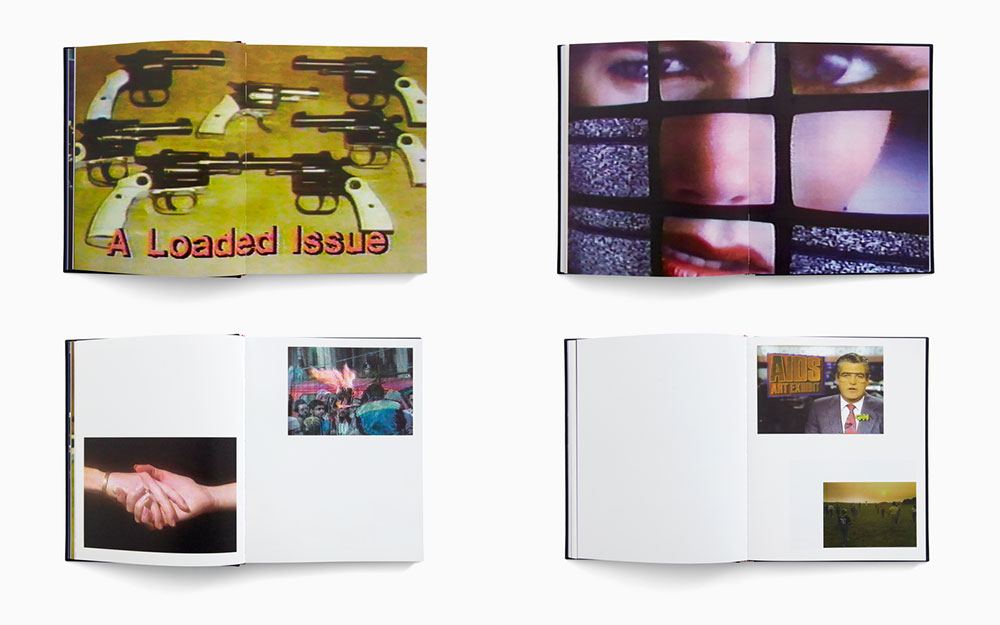
DB: You had said it's amazing that all of your work is currently available on Criterion. But what happens if and when that goes away? Digital is not permanent. Archives are ongoing, updating.
MW: I try not to think about it as a filmmaker. I benefit from fair-use doctrine, I work with a lot of appropriated material. We live in a climate in which it is possible to do that, but that is being threatened, and I wonder about the viability of what I do. What does it look like 20 or 30 years from now for me to circulate my work commercially?
DB: There’s many cases where nobody knows who owns the rights to a movie; somebody does, and it's not the people who made the movie.
MW: That happens to filmmakers all the time. That’s why I feel so lucky to have all the work I've made to date in one place, but I recognize that probably won't happen again as I work with bigger media companies or streamers. As time goes on, the companies that own the copyright to my films will change or go away and other media companies will procure that IP, and over time it'll take a lot of tenacity to keep tabs on the rights to my work and make sure it can remain in circulation.
That to me is so important. To make sure that my work can continue to circulate. Because I make films that are not tethered to a specific time, but that I hope become more interesting as time goes on. For anybody who has an archivist spirit, you have to create your own archives.
Like I was saying, it's an active— a proactive space, in which you have to protect the accessibility of your own work across time.
DB: The Internet Archive took in Marion's entire archive, but the Internet Archive itself is presently in danger. There are so many people willing to shut it down and lose so much good for litigious reasons.
MW: People exist in a scarcity mindset about putting work out into the world and that with new technology, people feel that their work is under threat. As the amount of content increases and those rights become consumed by larger corporate entities that then become consumed by other corporate entities, the provenance of the actual material that exists within these libraries can get lost unless people proactively pursue their accessibility.
So, as a filmmaker, I really fight to prevent the erasure of history. I try to hold on to archives and support those who pursue their preservation. But, as filmmakers, we all have to be cognizant that that will become part of our job as well, to make sure that our work doesn't become lost within the cacophony of content.
DB: Did you pay out of Recorder’s budget to digitize Marion’s tapes?
MW: Yeah, we facilitated the indexing of the collection and then we paid for preservation work for a mere 100 tapes out of 70,000, which itself was 600, 700 hours of footage. So the endeavor of digitizing it is monumental to say the least.
DB: I fear certain digital media doesn’t decay. It's either there or not, and for a lot of it, it won't be.
MW: Yeah, we call it digital rot. It's hard for me to make a point about digital rot except that we are all putting so much media out there ourselves and it will be lost.
DB: How do you feel about that?
MW: I personally resist that and am pretty diligent about archiving everything that I put out into the world. I think about making documentaries about this time period in the future, both what they'll look like aesthetically, but also the problem of there being so much user-generated media. And what those films will look like and what the processes will be. Media will have a different texture and will be faced with unique problems on how to preserve that, to make sense of it, given that the volume and acceleration of its production is increasing and will continue to increase.
DB: You were working with such a large archive, yet you made the choice to reproduce Marion’s apartment and film reenactments.
MW: I mean, I use Marion’s actual Macintosh computers. I used actual VHS tapes from her collection. In post-production I baked footage from her tapes onto television screens that we filmed on set, and there were reenactments [with] actual people from the film. I always try, when I do recreations, to give them a documentary element, either through actual objects that were part of people's lives or through archival material that's integrated within them. It's interesting to me when recreations have documentary artifacts within them because, beyond media, objects are part of archives, and those are even more difficult to preserve because of the cost of physical space.
DB: As this is the second round of promoting this documentary, has anything changed in your way of presenting it?
MW: The truth is I haven't watched the film since it came out. I don't regularly watch my older films. For me to watch an old film is not to have an experience of the film, but to re-experience that time in my life. I have watched older films. The more time that goes by, the more interesting it is for me. I made this film in 2000. It came out in 2019. It's the last film I had come out before the pandemic. So for me to see it now is a flashback to a time in which I was showing films and discussing them at a different time in our society. I mean, people don't go to movie theaters to watch documentaries as much. It's harder to make a cultural event out of a documentary in real life. It felt more viable, where I felt like I had a space for that in a different way, before the pandemic. It might just be the nature of where I'm working and what I'm doing, but I miss the spaces in which I showed films in the past. I don't think it's fair to say they don't exist, but I'm curious how the conversation about the film shifts. It's always a surprise for me that I'm able to discuss a film I haven't seen in years, because the ideas stick with me, and even though I'm changing as a filmmaker and the things I'm thinking about are changing, it's helpful to see a continuous thread of what I'm interested in, what I gravitate to across time.
DB: This is also the book release, so you'll have an audience for that in person.
MW: It's just exciting for me that people are watching my films, together, in context. It feels like a special opportunity, and the book is another way to, I don't know, continue an afterlife for the things that I make so that they're not part of the flow of media, or the trash can of history, or things that wash away, but trying to create something that lasts, or that itself is an artifact that can be saved, and that people can hold.
I deal with archives in very tangible and material ways different from most people, so I really value trying to put that same thing out there, to make archives into material and real things for people to handle and to hold on to.
The goal for me in making films is to create an emotional impression that's strong enough that it lasts, and that the experience of watching the film is memorable for people and that things will trigger those memories. Whether it's a song, an image, or something they see in the world that resonates with the story. So all that a filmmaker can hope for is that what they do creates enough of an impression that it might last.
Recorder: The Marion Stokes Project screens tonight, November 19, at Metrograph, introduced by director Matt Wolf and followed by a conversation between Wolf, publisher Matt Connors, and the writer Doreen St. Félix. The screening will be preceded by the book launch of Input.
